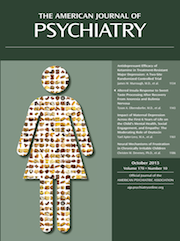Childhood Maltreatment and Psychopathology: A Case for Ecophenotypic Variants as Clinically and Neurobiologically Distinct Subtypes
Abstract
Objective
Childhood maltreatment increases risk for psychopathology. For some highly prevalent disorders (major depression, substance abuse, anxiety disorders, and posttraumatic stress disorder) a substantial subset of individuals have a history of maltreatment and a substantial subset do not. The authors examined the evidence to assess whether those with a history of maltreatment represent a clinically and biologically distinct subtype.
Method
The authors reviewed the literature on maltreatment as a risk factor for these disorders and on the clinical differences between individuals with and without a history of maltreatment who share the same diagnoses. Neurobiological findings in maltreated individuals were reviewed and compared with findings reported for these disorders.
Results
Maltreated individuals with depressive, anxiety, and substance use disorders have an earlier age at onset, greater symptom severity, more comorbidity, a greater risk for suicide, and poorer treatment response than nonmaltreated individuals with the same diagnoses. Imaging findings associated with these disorders, such as reduced hippocampal volume and amygdala hyperreactivity, are more consistently observed in maltreated individuals and may represent a maltreatment-related risk factor. Maltreated individuals also differ from others as a result of epigenetic modifications and genetic polymorphisms that interact with experience to increase risk for psychopathology.
Conclusions
Phenotypic expression of psychopathology may be strongly influenced by exposure to maltreatment, leading to a constellation of ecophenotypes. While these ecophenotypes fit within conventional diagnostic boundaries, they likely represent distinct subtypes. Recognition of this distinction may be essential in determining the biological bases of these disorders. Treatment guidelines and algorithms may be enhanced if maltreated and nonmaltreated individuals with the same diagnostic labels are differentiated.



